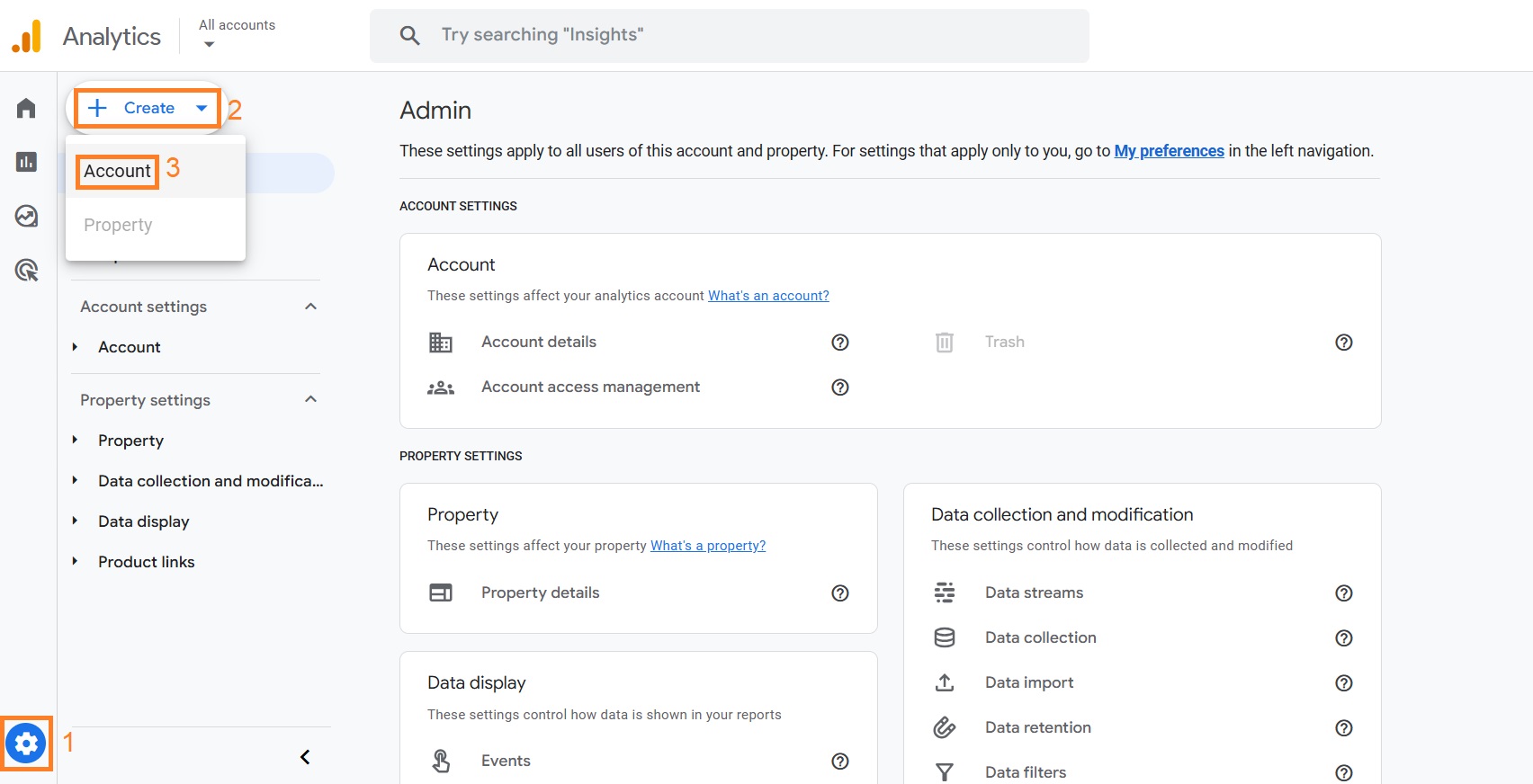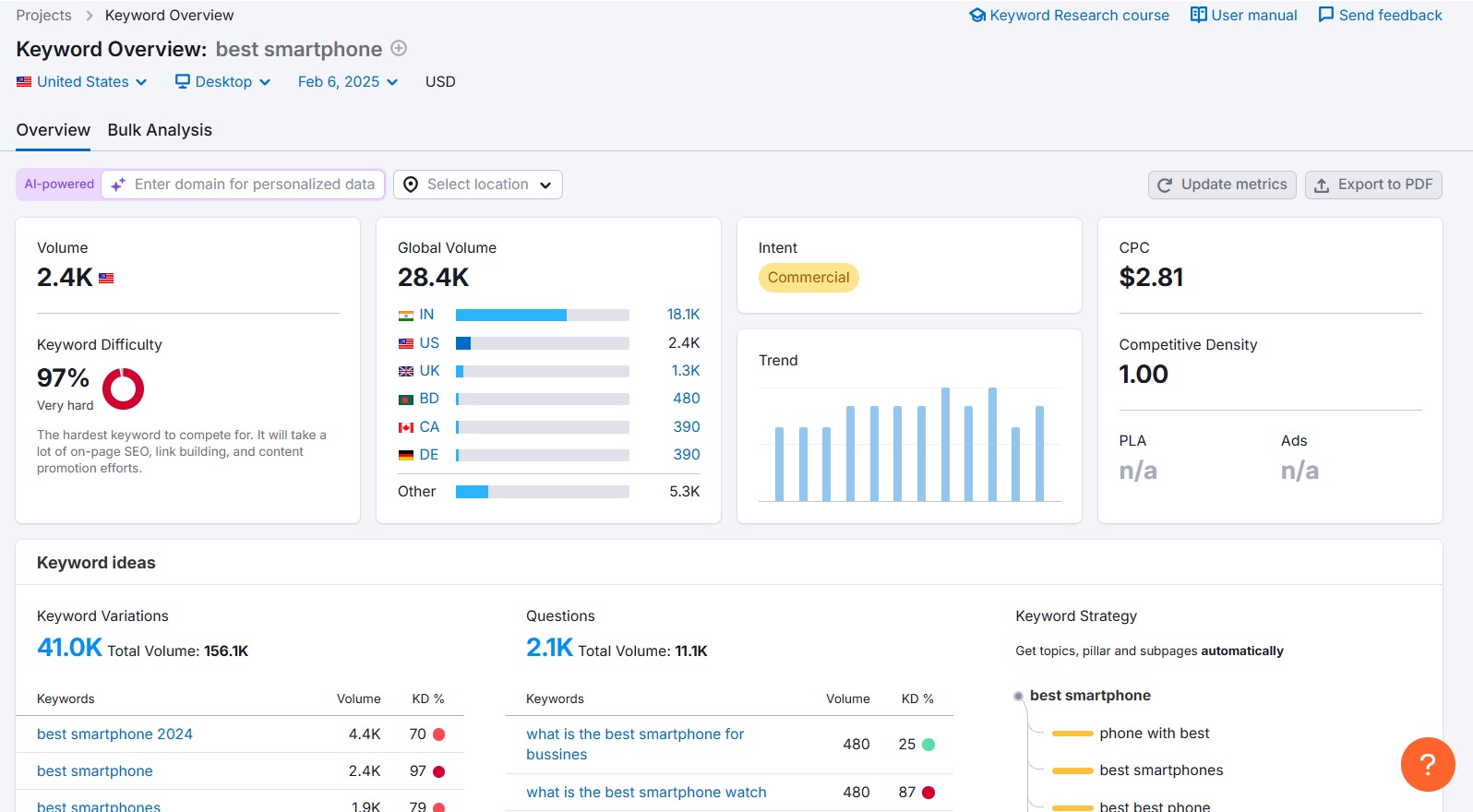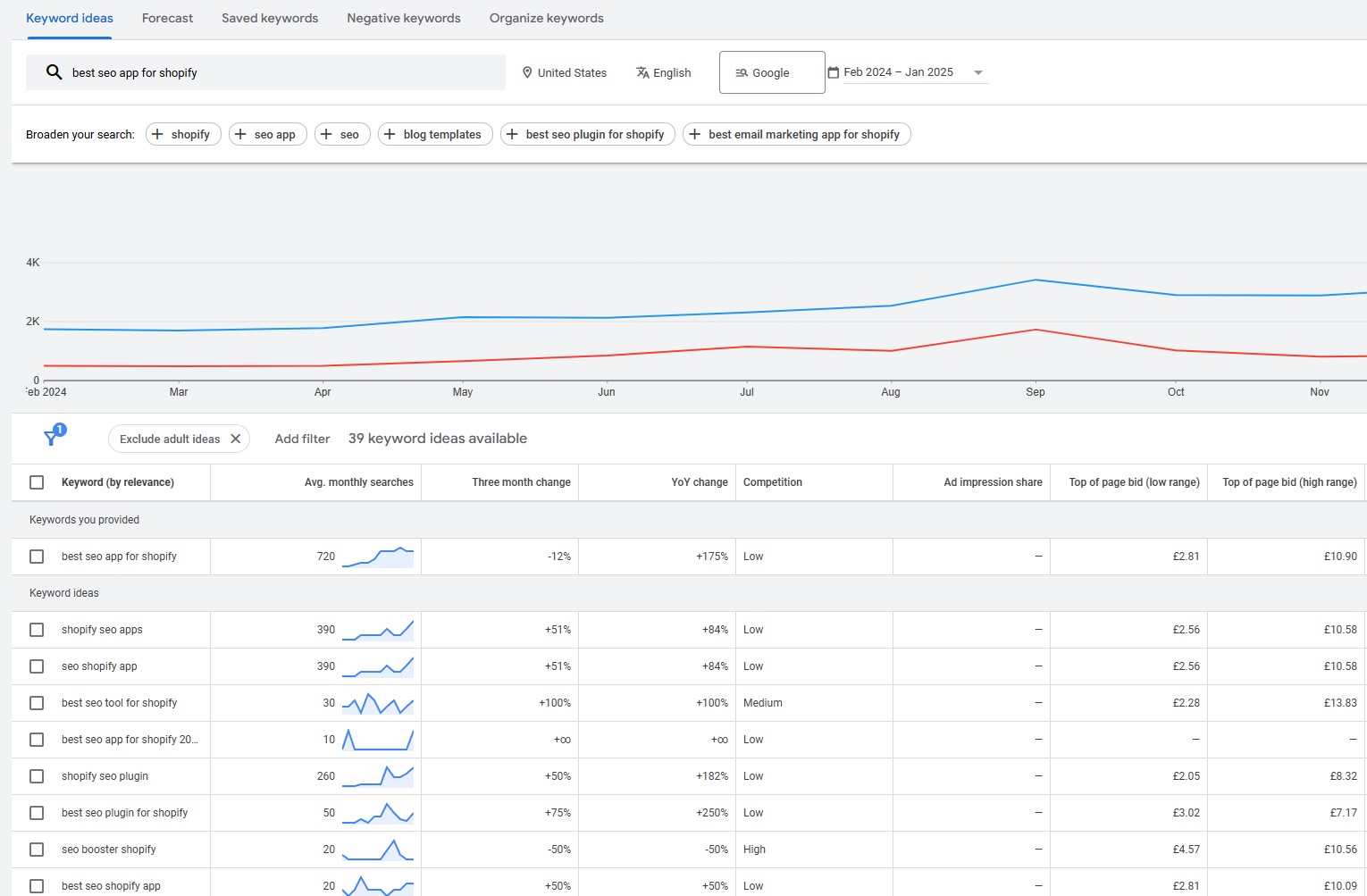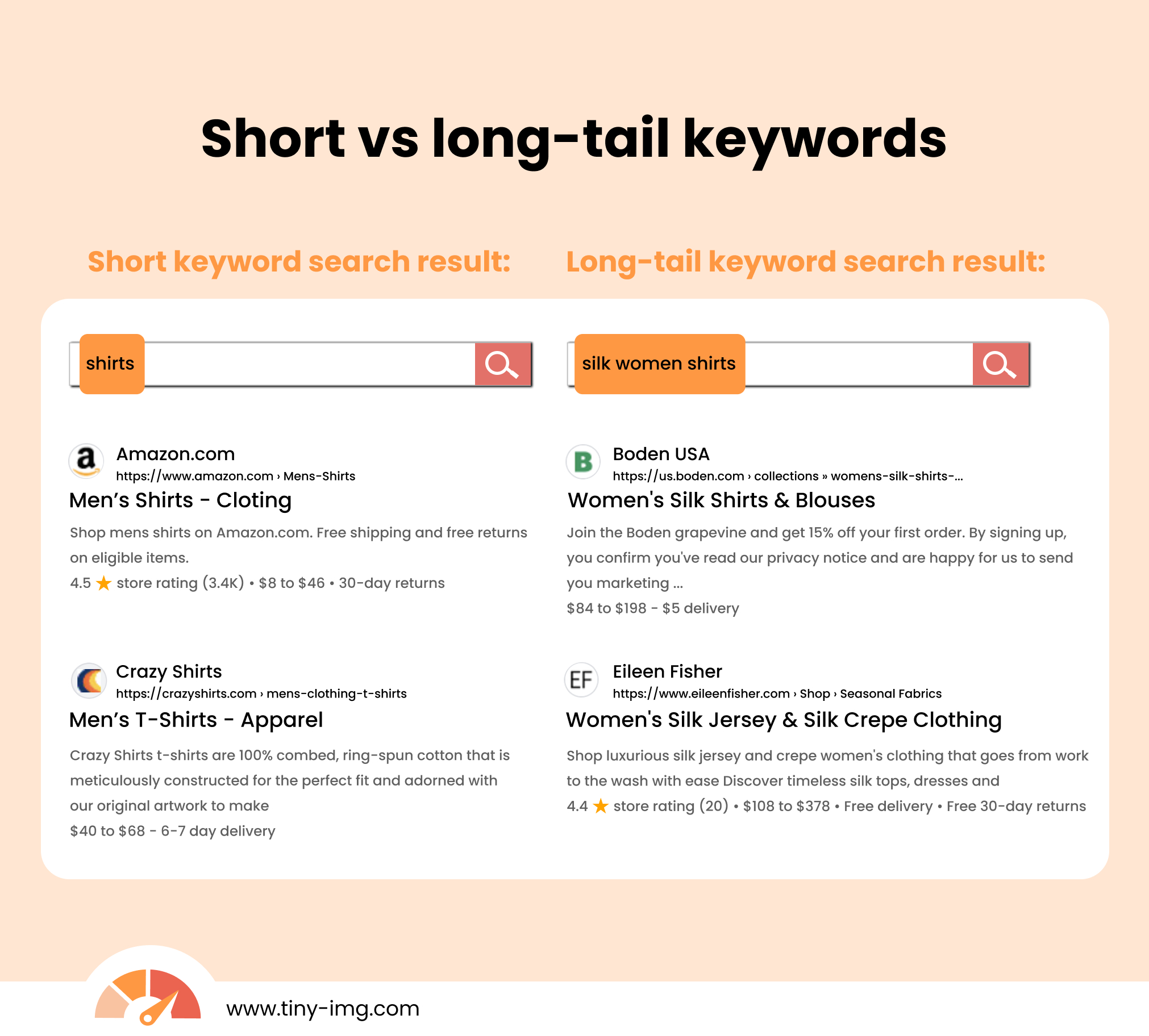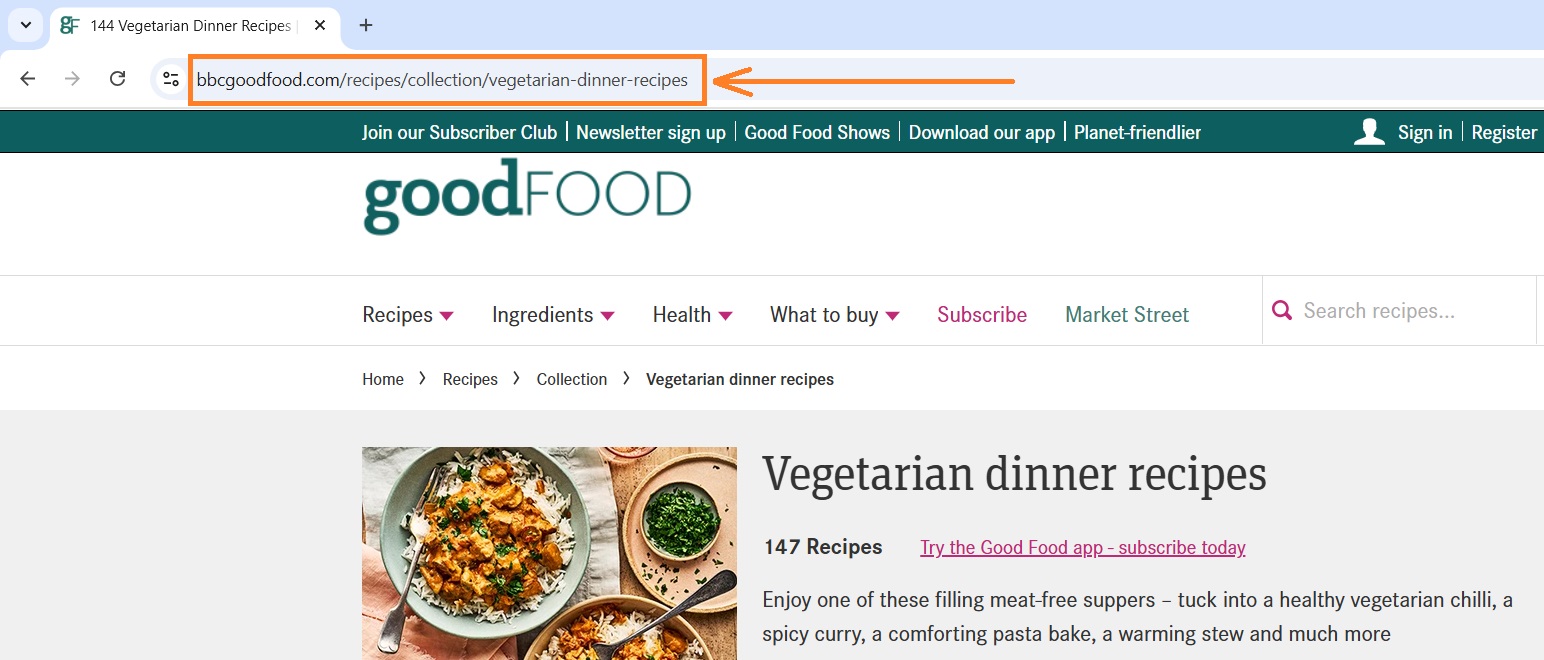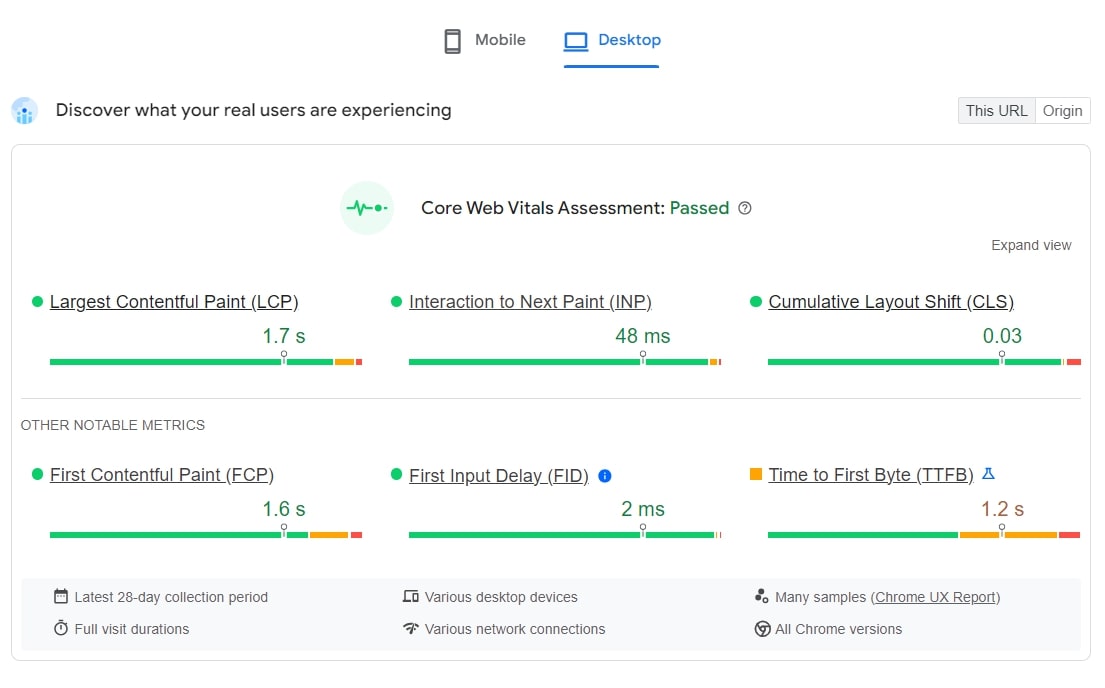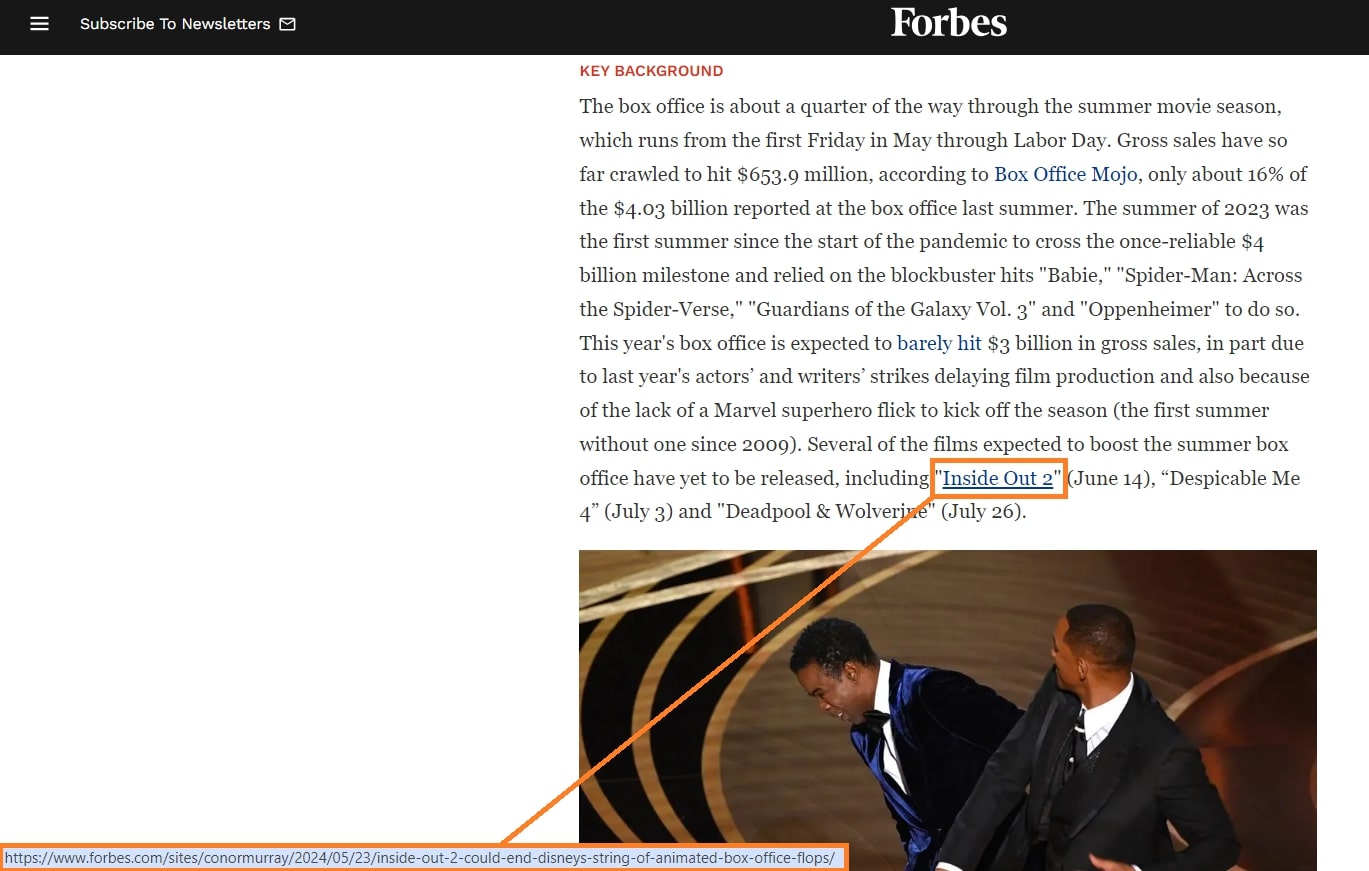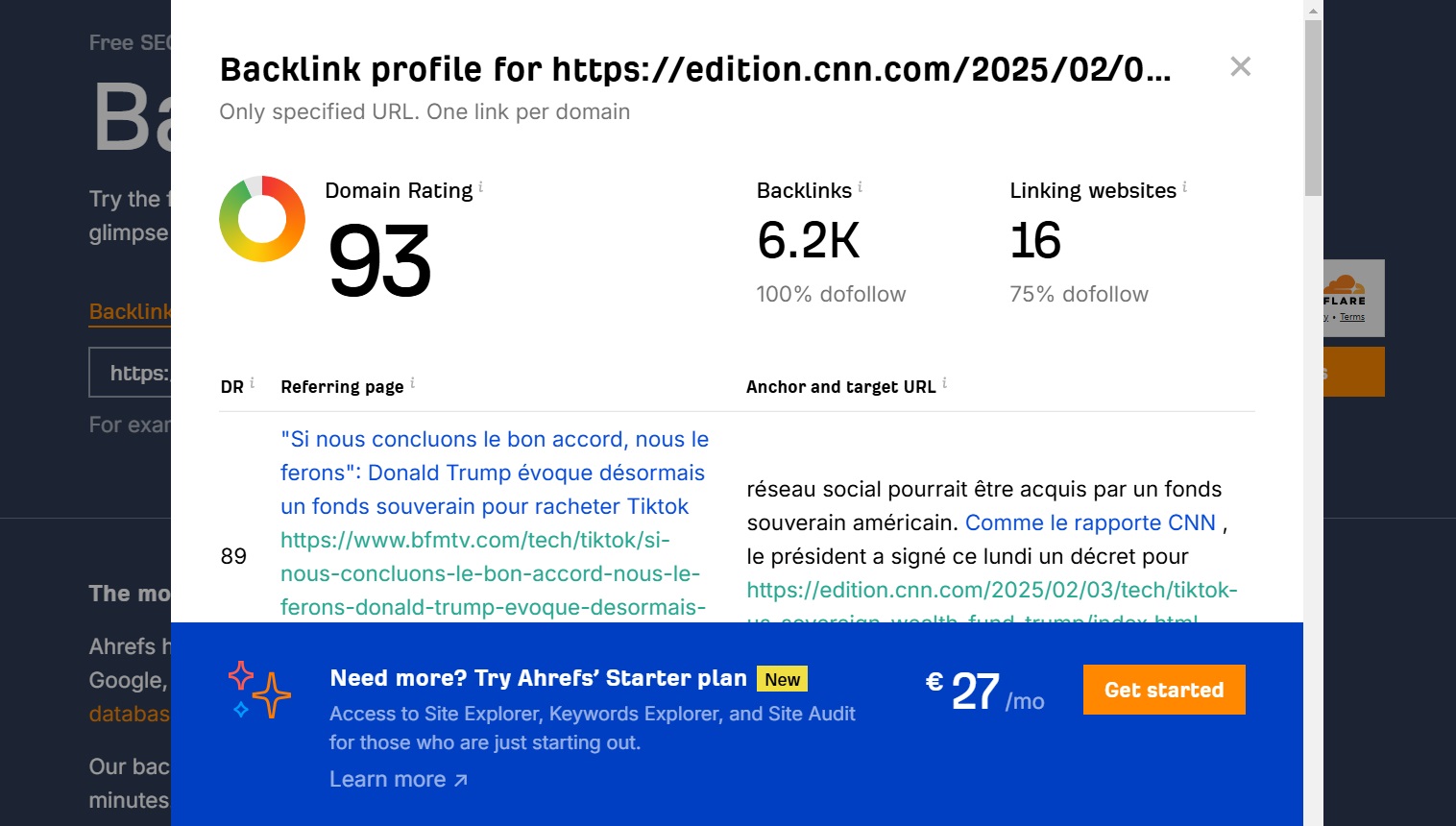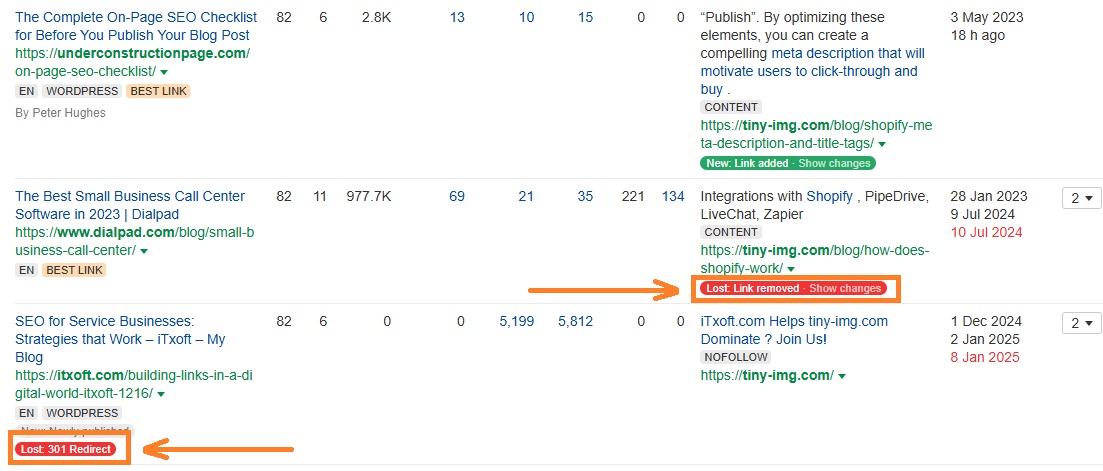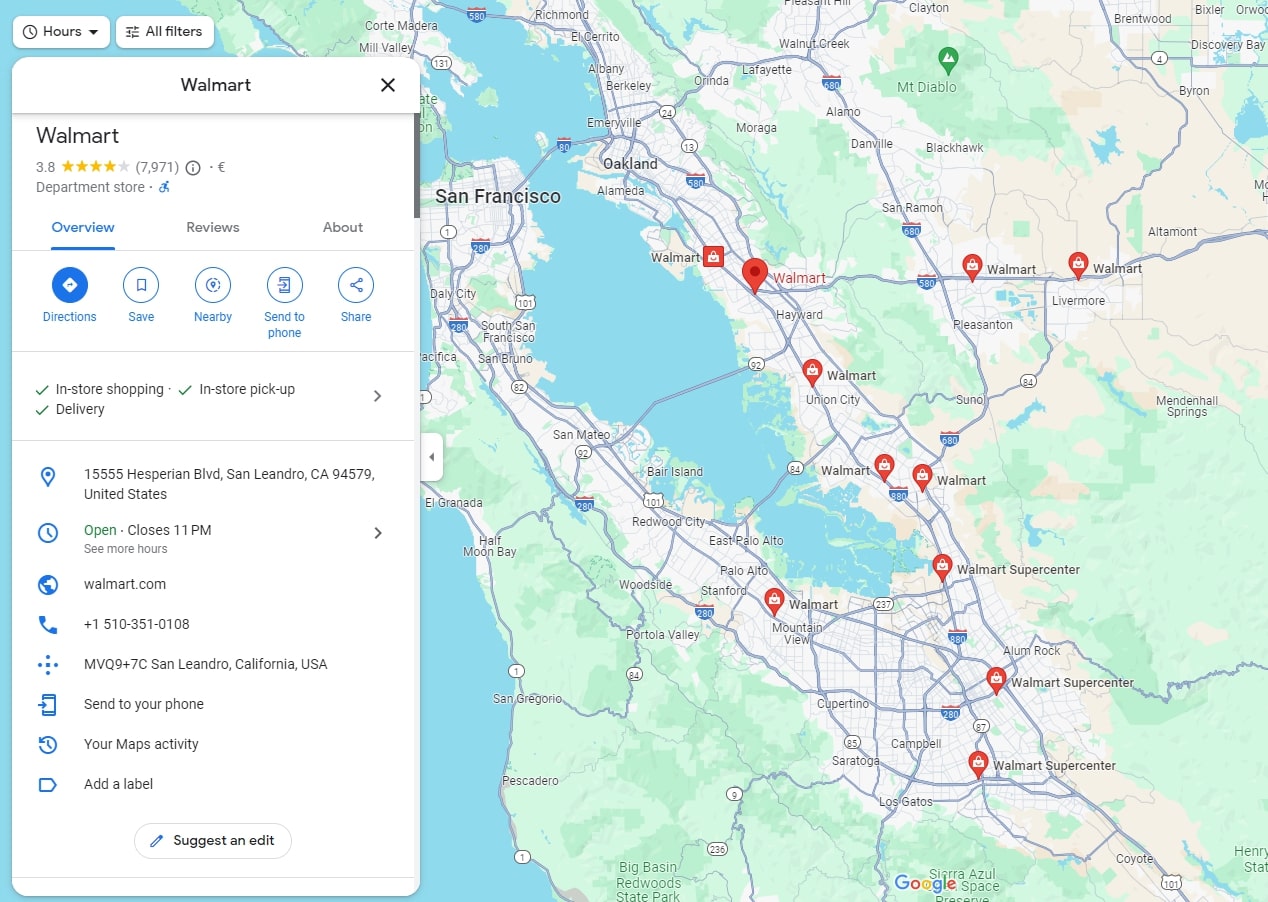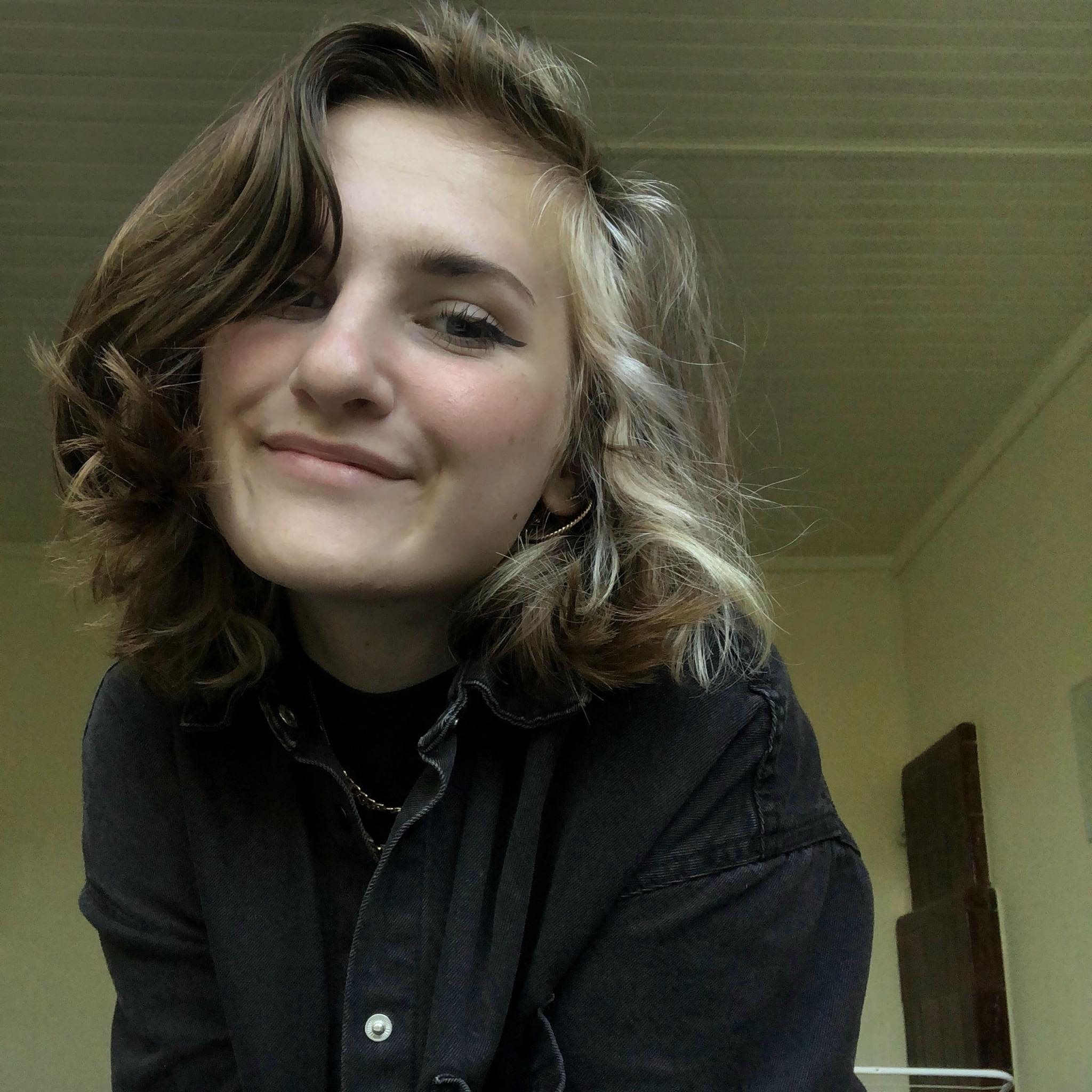Boosting your Shopify SEO can help reach higher rankings and drive more organic traffic. Users view organic search as more reliable than paid search, making it a free way to ensure sustainable and long-term results both in user reach and sales.
According to Internet Live Stats, Google gets over 3.5 billion searches everyday. While it proves that SEO is still relative and works, it also shows that search engine results pages (SERPs) can be a highly competitive landscape.
To help you understand how you can successfully move towards higher rankings, we prepared the ultimate Shopify SEO checklist. We categorized tasks and explained every step in detail so you could implement all the tips to your store.
How to use this SEO checklist
Our SEO checklist covers the main principles of SEO. To help you get the most out of it, we’ve broken it down into main sections, so you’d know where to start. They include:
- SEO tool checklist
- Keyword research checklist
- On-page SEO checklist
- Off-page SEO checklist
- Technical SEO checklist
- Content creation checklist
Feel free to use these links to jump to any section that’s important for your store!
Now, let’s get into the SEO checklist and help boost your Shopify store’s ranking on search engine results pages (SERPs).
The Shopify SEO checklist – 26 tips to boost your store’s organic visibility
If you want your business to grow successfully, ranking as high as possible on SERPs is crucial. While it takes time to build up site authority, even new websites can reach strong ranking on Google by following this SEO checklist.
But before we dive into it, make sure you complete the initial setup steps to avoid any interruptions when doing on-page and off-page SEO tasks.
Initial setup for Shopify SEO
Pre-launch SEO tasks include setting up some necessary SEO tools and preparing to release content that’s made for your target audience. So, here are all the steps you should take before getting your Shopify site out into the world:
1. Use a Shopify SEO tool
SEO optimization involves a lot of mundane tasks that can take up time, especially if you don’t have a dedicated person assigned. That’s why you should look into Shopify SEO apps that could automate SEO tasks, like TinyIMG or Booster SEO.
For example, TinyIMG can help you save resources and boost your store’s SEO without much involvement. Here’s some of its main features:
- Bulk metadata optimization or automated generation
- Bulk alt text editing or automated generation
- Automatic image filename generation
- Coding-free JSON-LD setup
- Automated image compression
- One-click lazy loading and asset preloading setup
- IndexNow for faster page indexing on search engines like Bing and Yandex
Some SEO apps, including TinyIMG, come with speed optimization features as well. That’s because speed is an important ranking factor and shouldn’t be overlooked. So, consider website performance optimization features when choosing the best app for your store.
2. Set up search engine webmaster tools
You can set up different search engine webmaster tools depending on which engines you want to focus on when analyzing your rankings.
For example, you can use Google Search Console (GSC) or Bing Webmaster tools. Such platforms help site owners monitor and troubleshoot how their pages perform on search engines.
The setup process is simple and similar for most search engine webmaster tools. Here’s an example of how it looks with GSC:
- Go to Google Search Console and create a Google Account or sign into your existing account.
- Select a property type. If you have Google Analytics set up on the same account, you can simply add a URL prefix. Otherwise, insert your domain and click Continue.
- Insert your DNS record details which you can find in the Domain section of the Shopify admin dashboard and click Verify.
That’s it. Remember that you may have to wait a day or a few for first the reports to be generated.
3. Add Google Analytics to Shopify
Google Analytics is essential for any business that wants to get website performance data. It gives insights into what digital marketing strategies or assets work for your site and what don’t.
Once you learn how to use it, you can leverage it to increase website traffic, enhance user experience, and potentially get more conversion rates.
Here’s a step-by-step guide on how to set up Google Analytics 4:
- Go to Google Analytics.
- Head to Admin > Create > Account.
- Add an account name, set the account data sharing settings, and click Next to add a property.
When adding a new property, you’ll need to provide your business objectives, property details, and business details. You can find the full process in Google’s GA4 tutorial.
4. Create an XML sitemap
A sitemap is a file with all the information about the pages and files on your website as well as their interconnection. It helps search engine crawlers discover and understand your website’s structure.
Shopify generates a sitemap automatically, and it contains links to all your products, pages, posts, images, and more. All you have to do is submit it to Google Search Console. Here’s how to do it:
- Go to Google Search Console.
- Click Sitemaps and enter your Shopify sitemap URL.
- Press Submit.
You can learn more about sitemaps and find more tips in our Shopify sitemap guide.
Keyword research checklist
When optimizing your store for SEO, it’s natural to start from searching for the most important keywords for your store. That’s called keyword research, and it helps you understand what your potential customers are searching for to find your site.
Here are the main keyword research tasks you should do for your website:
5. Use a reliable keyword research tool
Using a keyword research tool, like Ahrefs or Semrush, is beneficial because it offers reliable keyword overview and insights fast. Such services let you analyze keywords based on search location and show you the global volume, different variations, and questions you could use.
If you’re not ready to invest, you can use the Google Keyword Planner. It’s completely free and helps you discover new keywords, their monthly searches, and more.
Alternatively, check the SEO tools you’re already using on Shopify to see if they offer any keyword-related features. For example, TinyIMG gives you 10 keyword suggestions generated with AI based on the page title or URL that you insert.
6. Target long-tail keywords
Long-tail keywords are longer phrases that are more specific than generic keywords. There are a few reasons why you should target long-tail keywords:
- Lower competition. A study by Backlinko found that 91.8% of search queries are long-tail keywords. While short keywords are high-volume, long-tail keywords are focused on a specific demographic. You can see an example of how a long-tail keyword is more focused than a short one below.
- Higher conversion rates. If users leverage long-tail keywords, it means they’re looking for something specific. This could potentially help reach higher conversion rates. For example, a study by SEER Interactive found that long-tail keywords offer a 4.15% higher conversion rate than short keywords.
- Better for voice search. Users often leverage Siri and Google Assistant for voice search, and the requests are usually more of conversational nature than on traditional search engines.
7. Align keywords with search intent
Search intent refers to the goal of the reader when entering a search query. If you match your content and keywords to the user intent, you’ll not only ensure higher clicks but higher SEO rankings as well.
There are four search intents that can be distinguished:
- Informational – refers to content that users look for to gain knowledge.
- Navigational – the user intends to find a specific page, for example, the Facebook log in page.
- Transactional – the user is looking to purchase something.
- Commercial investigation – the user intends to research the best buying option for their needs.
If you’re unsure what search intent a specific target keyword has, perform a SERP analysis. The top results that Google ranks will reflect what the user intent is.
You can then use this information to optimize your content, including creating clear meta titles and descriptions or call to actions that align with user intent.
On-page SEO tasks
On-page SEO deals with optimizing separate pages to help them rank higher in search engines. Here are all the tasks you should implement to improve your position in search results:
8. Include keywords into your URLs
Making SEO-friendly URLs helps both users and search engines understand what your page is about. It should contain the main keyword and shouldn’t be too long. Plus, the words should be separated by hyphens.
Let’s take a look at the Good Food website and see how a good Shopify URL structure could look like:
As you can see, the URL is short but conveys the main idea of the article, which is vegetarian dinner recipes. It’s not overfilled with unnecessary phrases and the words are neatly separated by hyphens to make it easier to read.
9. Make sure headings include relevant keywords
Heading tags can help improve page SEO by helping search engines understand your content better. They usually include target keywords and ensure easy readability.
- H1 – the title of the page post that usually includes the main keyword.
- H2 – the subheadings that are used to summarize the main points of your topic.
- H3 – the sections used to elaborate further on the ideas stated in H2.
- H4, H5, H6 – further elaborations on previous-level headings.
Note that on pages created through Shopify, page titles are the H1 tag by default.
10. Use keywords in first & last paragraphs
Just as you mention keywords in headings, you should also include them in your paragraphs. This doesn’t mean you should overfill your content with them. Instead, placing the target keyword or its variation in the first and last paragraphs of your content is a good practice.
For starters, it helps show search engines that you’re sticking straight to the point early in the content. This is also useful for your readers – starting straight from the main point makes your page easier to scan.
Meanwhile, naturally mentioning your target keyword at the end of your content shows that you’re summarizing your core points. This signals to search engines that your content has remained consistent throughout the page.
11. Add informative metadata
Metadata, or a meta title and meta description, are HTML tags that give search engines information about your page.
You can see an example of how the metadata of a Regatta Lifestyle page looks on Google below.
But it’s not just about search engines – another goal of metadata is to convince the user to click on your website. Let’s take a look at what they should be:
- Meta title. It should be less than 60 characters long and include the main keyword. Make it descriptive and interesting to potential customers.
- Meta description. Write a unique and informative description of your page content, including a call to action and target keyword. Note that it shouldn’t exceed 160 characters.
Such tools as TinyIMG come with an AI metadata generator for quick optimization. You can also check if your titles and descriptions are well-written with the free metadata checker.
12. Optimize images
Optimizing images for SEO is just as important as creating high-quality content. Here are the main things you should do:
- Choose the right size. Large images can adversely impact site speed and user experience. Make sure your Shopify image sizes don’t exceed the recommended 4472 x 4472 pixels, or 20 MB.
- Create a descriptive alt text. Alternative texts help search engines understand your page content better. Write descriptions that are easy to understand.
If your website has hundreds of images, we recommend getting a Shopify image optimization app, like TinyIMG. It lets you automatically compress images, resize the ones that are too big, and automate alt text creation.
13. Create people-first content
Google has content quality rater guidelines to evaluate whether the content is valuable and created for the reader rather than search engines. The concept is called E-E-A-T which stands for Experience, Expertise, Authoritativeness, and Trustworthiness.
What this means is that Google wants websites to provide firsthand experience, demonstrate deeper knowledge about a topic, build up your reliability, and ensure that content is accurate.
Here are a few tips on how to achieve people-first content:
- Focus on your audience – instead of overstuffing your content with keywords for search engines to notice, prioritize providing valuable and engaging answers.
- Give real insights – demonstrate that you’ve done your research about the concept and provide interviews, your personal experience, or testimonials.
- Provide sources – establish credibility by using authoritative sources in your content, whether by sharing statistics or citing a professional in the field.
Technical SEO tasks
Technical SEO might sound difficult at first glance, but most tasks can be completed even if you don’t know much about coding or website infrastructure. So, let’s take a look at the most essential tasks you should complete.
14. Optimize for speed
Core Web Vitals is an assessment of the real user experience on a website, including loading time, interactivity, and visual stability of a page. Ensuring great test results can guarantee a positive user experience, potentially leading to a higher search engine position.
You can check your Core Web Vitals results by adding your page URL to Google’s PageSpeed Insights. Here’s an example of how the assessment looks like:
To improve Core Web Vitals, you’ll need to identify potential issues. Depending on the results, you may need to:
- Improve site speed. If the Largest Contentful Paint (LCP) result needs improvement, check out the best eCommerce site speed optimization practices, which include optimizing your images, disabling unused apps, optimizing your theme, and more.
- Enhance page stability. To enhance the Interaction to Next Pain (INP) result, add height, width, and aspect-ratio attributes to your images.
- Improve interactivity. If the Cumulative Layout Shift (CLS) result isn’t ideal, minify JavaScript and use Google Tag Manager to reduce code without changing functionality.
15. Optimize for mobile devices
Optimizing your website for mobile devices can benefit your SEO efforts by enhancing user experience. So, let’s take a look at a few main Shopify mobile optimization practices to implement:
- Adjust images for smaller screens to create a structured and mobile-friendly layout
- Optimize mobile website speed to reduce bounce rates
- Use short text to avoid overstuffing the page but don’t forget to use keywords
- Improve the checkout page to ensure user convenience and minimize cart abandonment rates
You can learn more tips for improving your mobile website by reading our Shopify mobile store optimization guide.
16. Use internal links
Internal linking refers to the process of linking from one page of your website to another. There are two types of internal links:
- Structural – navigational links to your menu, product categories, homepage, and so on
- Contextual – links that navigate the reader to related content
Contextual linking helps search engines see related content on your site and its importance. To put it simply, if a specific page is getting more links, search engines will deem it more important.
Here’s an example of internal linking on the Forbes website:
In an article about the “Bad Boys: Ride Or Die” movie and its box office success, Forbes also mentions the “Inside Out 2” movie in context. They use this as an opportunity to link to another recent article of theirs.
17. Fix broken links
Broken links, or 404 errors, can significantly affect your SEO efforts because search engines can’t crawl them. Plus, if visitors detect broken pages, they’re highly likely to leave instantly.
The easiest way to fix broken links is using TinyIMG. You can use it to quickly create redirects, set automatic redirection, or even get broken link reports.
Alternatively, you can fix broken links manually. First, you’ll need to find broken links using Google Analytics 4 or Google Search Console. Then, you can create redirects on Shopify by clicking the View URL redirects button in the URL redirects section.
To learn all about 404 errors, read our tutorial on how to fix broken Shopify links.
18. Add structured data (schema markup)
Structured data, or schema markup, is a code that helps search engines understand your page content better. Setting it up helps get rich snippets in search engines. These are usual snippets but with additional data about your page or product, such as reviews, price, or ratings.
Here’s a rich snippet example of Target:
While adding structured data can seem difficult, getting an app like TinyIMG simplifies the process by eliminating the need to code.
If you want to learn more, read our Shopify structured data guide to learn how to add it both automatically and manually.
19. Get rid of duplicate content
Duplicate content is similar text that appears on two different pages on your website. The reason it can negatively affect your SEO is that it becomes unclear for search engines which page they should rank.
To ensure you don’t have duplicate content on your website, make all text original and unique. This means you shouldn’t use generic metadata or product descriptions sent by the manufacturer.
If you need duplicate content in some cases, you can use a canonical tag. The way it works is you insert a rel=”canonical” code into your theme code, and search engines will know which page they should prioritize.
In case coding isn’t your strong point, you can get a third-party app like the Canonical Tag URL Wizard to help you out.
Off-page SEO tasks
Off-page SEO is different from other SEO types because it’s the only one that deals with activities outside of your website to ensure higher ranking. The main goal is to build website authority through external sources. Here’s all you can do to improve your off-page SEO:
20. Perform a competitor backlink analysis
A competitor backlink analysis involves examining your competitors’ backlinks to find link-building opportunities for your own website. For this, you can use a backlink analysis tool, like Ahrefs or Semrush. If you don’t want to invest money, you can do it manually, but it will take longer.
First, you’ll need to identify your competitors based on the keyword(s) you’re targeting. You can enter the queries in Google and pick the top-ranking pages.
Then, you can leverage the free Ahrefs backlink checker. Just enter your competitor’s page URL and you’ll get a domain rating with a list of backlinks below it.
Copy and document the backlinks of all your competitors in one place. You can use it to draw patterns and spot valuable backlink sources.
Also, check for any repeating link-building strategies that you could implement as well. For example, pitch your own content ideas if your competitors have guest posts on other sites.
21. Get backlinks
Link building is the backbone technique of off-page SEO. When reputable websites link to your website, it demonstrates your website authority to search engines, leading to higher search result positions.
Some link building is natural – other websites find something worth noting on your site and link to you as a source. Yet, some of them may only mention you without adding a link. In such cases, try seizing the opportunity and turning mentions into backlinks by contacting the site’s team.
Another way to get backlinks is to promote your content. One of the examples is writing pitches to journalists or bloggers on platforms like Prowly or Featured.
Whatever methods you use to get backlinks, prioritize quality – the links should be relevant to your Shopify business. There are a few things to note:
- Ask for backlinks from websites with high domain authority scores
- Prioritize websites that have high organic traffic
- Make sure the company you’re asking from is relevant to your business
- Less is more – a few unique backlinks are better than overstuffing the page with non-valuable links
22. Leverage digital PR
Digital PR is an excellent way to get others talking about your brand or even get backlinks. This can signal to search engines that people seek your site and therefore you deserve higher rankings.
Here are a few ways you could leverage digital PR:
- Perform data-driven studies. Many writers are looking for proven facts or statistics to back up their claims. If you provide research-backed content, it’s highly likely that others will link back to your site as a reliable source.
- Create stand-out campaigns. When you’re trying to create a campaign, try to be bold and stand out from what’s already out there to get people talking.
- Product-based PR. Think of why journalists should write about your product and what would make people want to read about it. Then, write press releases about your new arrivals.
What matters is that you focus on creating unique content that would actually be interesting for others. Consider what’s the message you want to send and who is the target audience. You can distribute your content through your own channels, news sites, or by paying for ads or influencers if you have the budget.
23. Link reclamation
Link reclamation refers to the process of reclaiming the backlinks you’ve lost. It may have been removed or the page has been deleted or redirected.
To find link reclamation opportunities, you can use a tool like Ahrefs. Not only will it show you lost links, it will also let you filter the best links and show you the reason for the lost link.
Lost links on non-indexed pages are not worth pursuing because Google isn’t going to take them into account for your site authority.
However, if you believe that the page was accidentally removed or the link was replaced with another during a content update, reach out to the company. If anything, you’ll get feedback on where you could improve.
24. Be active on social media
Social media sites like YouTube, LinkedIn, and Facebook have some of the highest domain authority and popularity scores. So, it’s a great way to leverage these platforms for off-site SEO.
Make sure you promote your content to a wider audience and engage with people on social media. This can eventually lead to building more backlinks.
Alternatively, you can find social media influencers with a similar niche and target audience to yours. Try offering them to collaborate. You may ask them to share your content or give backlinks from their website.
25. Perform local SEO
Local SEO can improve your online presence and help more consumers within your geographic area discover your business. A good example of local SEO is the Google Business Profile, formerly known as Google My Business.
For instance, here’s what Walmart’s profile looks like on Google Maps:
By creating a Google Business Profile, Walmart can manage how its stores appear in Google Maps, Google Shopping, and Search. Additionally, customers can write reviews and rate their experience. All this contributes to higher search rankings for local keywords.
You can also improve your website with keywords specific to the location you’re selling, adding business hours, address, or phone number, and creating landing pages specific for locations (if your website operates in multiple different ones).
26. Consider writing guest posts
Popping into a high-quality blog as a guest author can highly benefit your off-page SEO. Approach blogs within your niche and pitch your ideas on how you could contribute to their website content.
Focus on writing well-researched content but make sure to also include links to the relevant pages of your website.
Content creation checklist
Content is an integral part of ensuring SEO rankings. To put it simply, it has to be created for readers, not search engines. Here are a few tips and tricks on how to optimize your content:
- Create a strategy. Make sure your content is relative to your readers and includes the main keywords.
- Write informative product descriptions. For product pages, write product descriptions that focus on benefits for the user rather than just features. This will make the product more appealing to the reader.
- Write effective category descriptions. Make sure your categories come with short descriptions of the content or products they include. Don’t forget to insert relevant keywords.
- Add a table of contents. If you’re writing a blog post, include a table of contents with all headings listed together with jump links.
- Use headings and subheadings. Ensure your content always includes a first-level heading. Subheadings like H2 or H3 are also highly recommended to increase readability and help search engines understand your content.
- Fix grammar mistakes. Always proofread your content and use free tools like Grammarly to check for mistakes.
- Ensure easier readability. Prioritize short and clear sentences as well as active voice instead of passive. If you’re not sure what works and what doesn’t, check your content with the free Hemingway tool.
Common SEO challenges for Shopify websites
Whatever the niche, there are many SEO challenges that various Shopify websites face. Here are some of the most common ones:
- Non-optimized images. Images are one of the first things site visitors look at. Many Shopify website owners don’t follow image SEO practices, resulting in slower site speeds or poor visual layout.
- Out-of-stock pages. Some store owners delete product pages of items that are out of stock. However, if your page ranked higher in search engines, deleting it means you’re losing the position. Instead, it’s more valuable to redirect customers to similar or relevant pages on your website.
- Poor internal linking. While internal links can help search engines find relevant content on your website, many overlook its importance or include it incorrectly. Ensure the anchor text includes related keywords rather than basic phrases like “click here.”
- No blog. Even when running a store, creating a blog is crucial for driving more traffic and getting higher positions on the Search Engine Results Page (SERP).
- Duplicate content. Many Shopify store owners take the fast route and leave manufacturer product descriptions. This can result in duplicate content across multiple websites and impede SEO efforts because of the lack of uniqueness.
- Bad URL structure. URLs help search engines figure out your website structure, so it’s crucial to create clear URLs that describe your pages in short.
- Generic or missing metadata. Meta titles and meta descriptions should attract new readers and search engines. So, generic tags won’t work for SEO – they should be informative and convincing.
These are just some of the general challenges Shopify site owners face. Each business requires different customizations, meaning SEO challenges can vary for different people.
Shopify SEO checklist: conclusion
A complete Shopify SEO checklist includes dealing with on-page, off-page, and technical tasks. If you want to have a high SEO score, you have to perform keyword research, optimize content, get backlinks from other sites, and more.
The fastest way to tick off many tasks from your Shopify SEO checklist is to automate them with a third-party tool, such as TinyIMG. It allows you to enable instant indexing with IndexNow, automates metadata editing, generates content and keyword suggestions with AI, helps improve speed, and more.
However, there are many free tools that can help you with particular tasks if your budget is tight. You can leverage the TinyIMG image compressor or metadata checker, analyze competitors with Ahrefs backlinks checker, or overview 10 keywords daily with a free Semrush account.

Frequently asked questions
Shopify is a great platform for SEO because it has some built-in features, optimizes page speed, and implements automatic sitemap updates. However, no platform can guarantee great SERP results without your SEO optimizations.
To make your Shopify store SEO friendly, you can optimize your site speed, product pages, and site structure, perform keyword research and add relevant ones to your site, get backlinks, and more.
Shopify doesn’t offer a SEO score report, but you can leverage Google’s PageSpeed Insights and get a comprehensive website performance and SEO report with listed issues. A score of 90 and above is considered excellent, while anything below it may use improvements.


